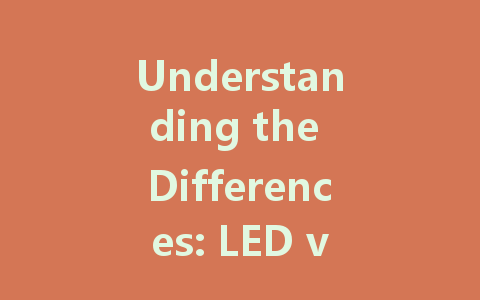
In today’s technology-driven world, the terms “LED” and “LCD” are frequently used when discussing screens for televisions, computers, and various devices. Though many people use these terms interchangeably, they refer to distinct technologies with different characteristics. In this article, we will explore the differences between LED and LCD screens, helping you make informed decisions about your next purchase.
What is LCD?
LCD stands for Liquid Crystal Display. This technology uses a liquid crystal solution sandwiched between two layers of glass. When an electric current passes through the liquid crystals, they change alignment, allowing light to pass through in varying amounts, which creates images.
LCD screens are popular for their ability to display sharp, clear visuals and their relatively low energy consumption. However, traditional LCD screens rely on fluorescent backlighting, making them less efficient compared to newer technologies.
What is LED?
LED, or Light Emitting Diode, refers specifically to the lighting technology used in screens. While LED screens are technically a type of LCD that utilizes LED backlighting instead of fluorescent tubes, the terminology has evolved. Nowadays, when people mention “LED screens,” they typically refer to displays that make use of either edge-lit or full-array LED backlighting to enhance picture quality.
Edge-Lit vs. Full-Array
Key Differences Between LED and LCD
Understanding the differences between LED and traditional LCD screens is crucial when choosing a display for your needs. Here are the primary distinctions:
Brightness and Color Accuracy
LED screens generally offer superior brightness and color accuracy compared to traditional LCDs. The improved backlighting from LEDs allows for deeper blacks and brighter whites, resulting in enhanced picture quality. This makes LED screens ideal for use in well-lit environments where visibility is critical.
Energy Efficiency
LED screens are more energy-efficient than their LCD counterparts due to the focus on LED backlighting. As a result, they consume less power, which can lead to lower electricity bills for consumers who use screens extensively.
Thickness and Design
LED technology allows for thinner displays. Because edge-lit LED screens use less depth for backlighting, manufacturers can create sleeker and more lightweight devices. This aspect is essential for wall-mounting televisions and creating portable laptops and monitors.
Lifespan and Durability
In general, LED screens have a longer lifespan than traditional LCD screens. LED technology is less prone to burn-in and other issues that can affect display longevity, making them a more durable choice in many situations.
Cost Considerations
When comparing prices, LED screens tend to be slightly more expensive than traditional LCDs. This price difference is often justified by the enhanced picture quality, energy efficiency, and design benefits. It is essential to weigh these factors against your budget when making a purchase.
Use Cases for Each Technology
Understanding the best use cases for each screen type can help you make a more informed decision:
When to Choose LED
When to Choose LCD
Conclusion
Choosing between LED and LCD screens involves considering various factors, including brightness, energy efficiency, and your specific needs. While LED screens offer superior performance and longevity, traditional LCD screens can still be a viable choice for budget-conscious consumers. By understanding the differences between these technologies, you can make an informed decision that not only meets your needs but also enhances your viewing experience. Whether you’re upgrading your home entertainment system or seeking a new monitor for work, being informed about your options will serve you well.